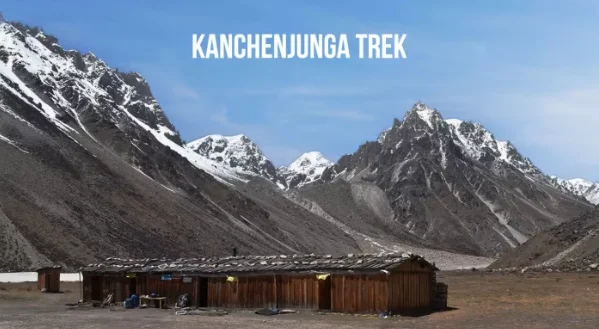The Kanchenjunga Base Camp Trek is one of Nepal’s most remote and breathtaking adventures, taking you deep into the heart of the eastern Himalayas. Named after Mount Kanchenjunga (8,586 meters)—the third highest mountain in the world—this trek offers an unforgettable journey through pristine landscapes, traditional villages, and dramatic mountain vistas.
Unlike the popular Everest and Annapurna routes, Kanchenjunga remains a hidden treasure, offering solitude, cultural richness, and raw natural beauty that few trekkers experience.
Overview of the Kanchenjunga Region
Located in the Taplejung District of eastern Nepal, the Kanchenjunga region shares its borders with Sikkim (India) and Tibet. The mountain itself is revered by locals as the “Five Treasures of the Great Snow,” representing gold, silver, gems, grain, and holy scriptures.
The Kanchenjunga Conservation Area, which covers over 2,000 square kilometers, protects rare species such as the snow leopard, red panda, and Himalayan black bear. Its dense forests, alpine meadows, and glacial valleys make it one of Nepal’s most ecologically diverse trekking regions.
Trekking to the Kanchenjunga Base Camp is not just about reaching the mountain’s foot—it’s about exploring a corner of the Himalayas where time seems to stand still.
Trek Highlights
- Stunning views of Mount Kanchenjunga (8,586m) and surrounding peaks like Jannu (Kumbhakarna) and Rathong.
- Exploration of both North and South Base Camps, each offering unique perspectives.
- Immersion in local cultures of the Limbu, Rai, Sherpa, and Tibetan communities.
- Walks through lush forests, remote villages, and high mountain passes.
- A chance to experience Nepal’s least crowded trekking trail.
Trek Route and Itinerary
The Kanchenjunga Base Camp Trek typically takes 20 to 25 days, depending on the route and pace. Most itineraries begin with a flight from Kathmandu to Bhadrapur and a drive to Taplejung, the trek’s starting point.
1. Taplejung to Chirwa
The trek begins with gentle trails through terraced farmlands and subtropical forests. Villages like Mitlung and Chirwa showcase Limbu culture and warm rural hospitality.
2. Chirwa to Ghunsa
The trail gradually ascends along the Tamor River, leading through rhododendron forests to Ghunsa, a picturesque Sherpa village at 3,595 meters. Ghunsa is known for its traditional wooden houses, monasteries, and views of snow-covered ridges.
3. Ghunsa to Lhonak
From Ghunsa, trekkers head north toward Kambachen (4,050m) and Lhonak (4,780m), passing glaciers and moraines. The scenery becomes increasingly rugged, with icy streams and views of Mount Jannu dominating the skyline.
4. Kanchenjunga North Base Camp (Pangpema)
The North Base Camp (5,143m) at Pangpema offers magnificent close-up views of Kanchenjunga’s towering north face. This is the ultimate highlight of the trek—an awe-inspiring reward for days of steady climbing.
5. Trek to South Base Camp
Some itineraries include crossing high passes such as the Sele La to reach the South Base Camp at Ramche (4,610m). From here, trekkers enjoy views of Kanchenjunga’s southern face and the Yalung Glacier.
6. Return to Taplejung
The return journey retraces parts of the trail, descending through vibrant forests and villages before finally reaching Taplejung.
Cultural Experience
The Kanchenjunga region is a melting pot of Nepal’s diverse ethnic heritage. The lower valleys are home to the Limbu and Rai communities, known for their rich traditions, dance, and music. As you climb higher, you’ll encounter Sherpa and Tibetan Buddhist villages, where prayer flags flutter over chortens (stupas) and ancient monasteries.
The local people are friendly, humble, and deeply spiritual. Visitors often have the opportunity to join evening prayers or taste traditional dishes like tongba (millet beer) and dhindo (local cornmeal food). This mix of cultural and natural beauty makes the trek an enriching experience beyond the physical challenge.
Best Time to Trek
The best seasons for the Kanchenjunga Base Camp Trek are spring (March–May) and autumn (September–November).
- Spring: The forests are ablaze with blooming rhododendrons, and the weather is mild.
- Autumn: Offers the clearest mountain views and stable weather conditions.
Winter trekking is possible but extremely cold at higher altitudes, while the monsoon season (June–August) brings heavy rainfall and leeches, making the trails slippery.
Difficulty Level
The Kanchenjunga Base Camp Trek is classified as moderate to strenuous. It requires good physical fitness, endurance, and prior trekking experience in high altitudes. The trails involve long days of walking, steep ascents, and remote sections with limited facilities.
However, the reward is immense—unspoiled nature, solitude, and a sense of accomplishment few travelers experience. Hiring a licensed guide and porter is strongly recommended, as the region is remote and navigation can be challenging.
Permits and Regulations
Trekking in the Kanchenjunga Conservation Area requires the following permits:
- Restricted Area Permit (issued by the Department of Immigration, Kathmandu)
- Kanchenjunga Conservation Area Entry Permit (KCAP)
Because Kanchenjunga lies in a restricted zone near the border, solo trekking is not allowed. You must travel with a registered guide and a minimum of two trekkers through a government-authorized trekking agency.
Accommodation and Food
Unlike the popular Everest and Annapurna regions, Kanchenjunga has limited teahouses. Accommodation is mostly in basic lodges or local homestays. Rooms are simple but cozy, often with shared bathrooms and wood-fired stoves for warmth.
Meals typically include Nepali staples such as dal bhat (rice and lentils), noodles, soups, potatoes, and seasonal vegetables. In remote areas, food options can be limited, so carrying energy snacks is advisable.
Wildlife and Nature
The Kanchenjunga Conservation Area is a biodiversity hotspot. Trekkers might spot:
- Snow leopards (rare)
- Red pandas
- Musk deer
- Blue sheep
- Himalayan monal (Nepal’s national bird)
The region’s forests of rhododendron, oak, pine, and bamboo change dramatically with altitude, providing breathtaking scenery at every turn.
Why Choose the Kanchenjunga Base Camp Trek?
While the Everest and Annapurna trails attract thousands of trekkers annually, Kanchenjunga offers an off-the-beaten-path adventure for true explorers. The region remains unspoiled by commercialization, giving you the rare opportunity to experience authentic Himalayan life.
If you value solitude, cultural authenticity, and untouched wilderness, this trek is a perfect choice. Every step through Kanchenjunga’s valleys feels like discovering a secret side of Nepal.
Responsible Trekking
As Kanchenjunga is a fragile ecosystem, responsible trekking practices are essential.
- Carry reusable water bottles and avoid plastic waste.
- Respect local customs and dress modestly.
- Support local teahouses and buy regional products.
- Follow your guide’s instructions regarding wildlife and environment protection.
Your conscious effort helps preserve this remote paradise for future generations.
Conclusion
The Kanchenjunga Base Camp Trek is a magnificent blend of mountain adventure, cultural immersion, and natural discovery. It takes you to one of the least-explored regions of the Himalayas, where every sunrise over Kanchenjunga’s snowy peaks fills you with awe.
From vibrant villages to glacial valleys, this trek captures Nepal’s raw beauty in its purest form. It is more than just a journey—it’s a soulful experience that connects you deeply with the spirit of the mountains.
For travelers seeking adventure beyond the ordinary, the Kanchen



